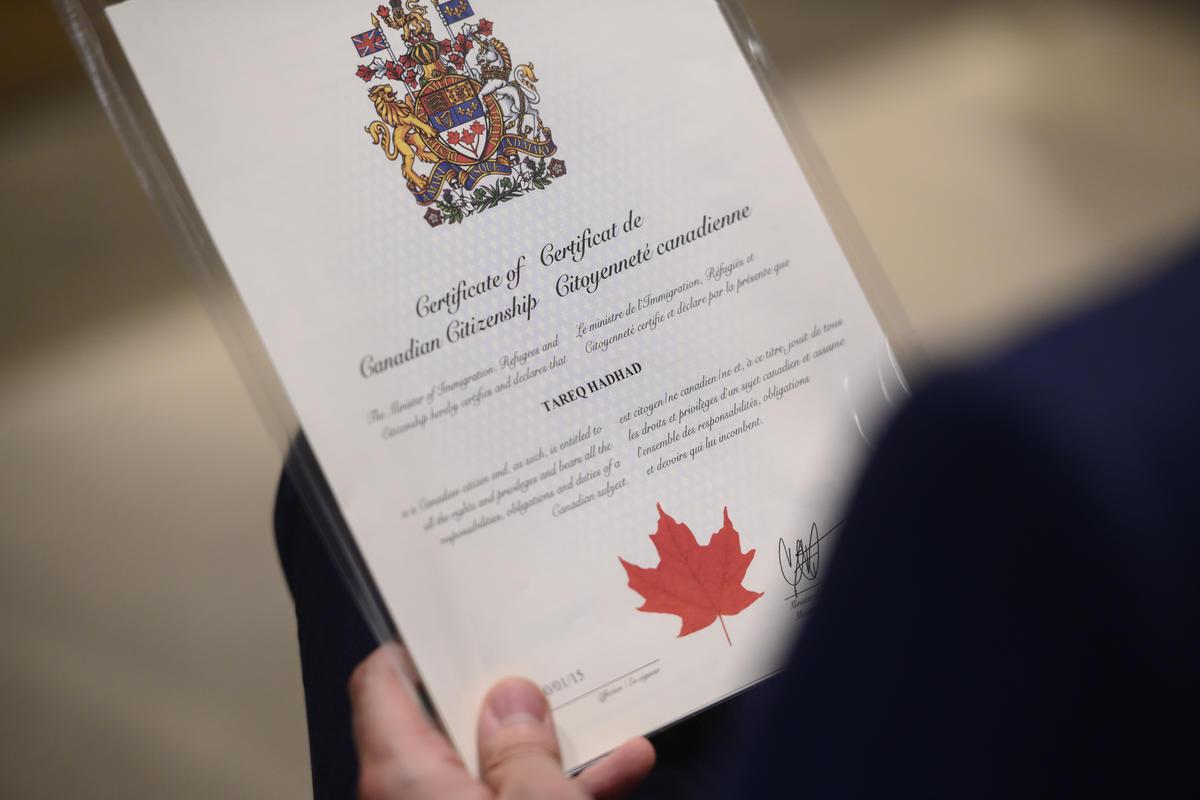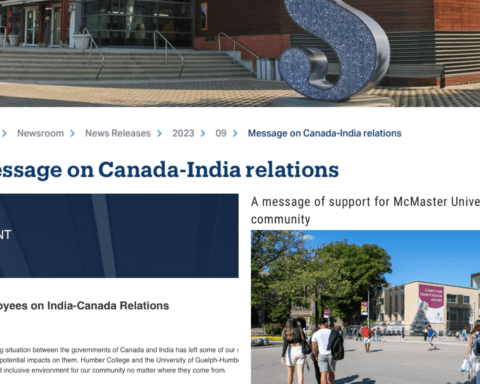Canada aims to attract about 1.3 million new immigrants over the next three years to help fill critical labour shortages and fuel post-pandemic growth.
Minister of Immigration, Refugees and Citizenship (IRCC) Sean Fraser announced the new targets on Monday as the government struggles to clear a backlog of about 1.8 million visa/citizenship and other applications in the queue exacerbated by pandemic-induced delays.
At the same time, the latest numbers from Statistics Canada show that job vacancies in the country remain high, with 874,700 unfilled positions.
In a statement, IRCC said there are still hundreds of thousands of positions in all sectors waiting to be filled.
Immigrants needed
“Immigration already accounts for almost 100% of labour force growth, and with 5 million Canadians set to retire by the end of this decade, the worker to retiree ratio will drop down to only 3:1,” it said. “This is a clear sign that we have a strong economic need for increased immigration.”
The 2022–2024 Immigration Levels Plan aims to continue welcoming immigrants at a rate of about 1 per cent of Canada’s population, including 431,645 permanent residents in 2022 (an increase of about 21,000 people from its original plan), 447,055 in 2023, and 451,000 in 2024.
“From farming and fishing to manufacturing, healthcare and the transportation sector, Canada relies on immigrants. Setting bold new immigration targets, as outlined in the 2022-2024 Levels Plan, will further help bring the immeasurable contribution of immigrants to our communities and across all sectors of the economy,” Fraser said during the announcement.
To support the new ambitious targets, which follows a record year of 405,000 new permanent residents in 2021, IRCC had earlier announced a plan to modernize Canada’s immigration system to fuel economic recovery and improve client experience.
Veteran Vancouver-based immigration lawyer, Richard Kurland, told NCM that “IRCC is banking on new information technology to deliver an aggressive program that will be faster for applicants and cheaper for government.”
“The objective is to have more people here, in less time, at less cost,” he said.
Goldy Hyder, president and CEO of the Business Council of Canada, said “even with full employment, the country will need newcomers to help fill all the jobs available.”
“To help meet these new targets, we urge the government to expand the immigration system’s processing capacity by adding new processing centres, updating outdated IT systems, and increasing recruitment and training of border agents and settlement services personnel,” Hyder said in a statement.
‘Perpetuating problems’
Jenny Kwan, the Vancouver East MP, who also acts as the NDP Immigration Critic, said the government is actually scaling back the Federal Skilled Workers Program by almost 50 per cent by shifting resources and immigration levels from one stream to another.
“The immigration levels released today shows that the government is perpetuating the problems they created when they failed to adjust the levels to accommodate the new (temporary to permanent resident pathway) immigration measure,” she said.
The measure, also known as TR2PR, is a limited-time pathway to permanent residence applicable only to temporary residents currently working in Canada and to their families.
According to a government memo cited by the National Post, the federal skilled workers program was being scaled back because IRCC simply can’t process the applications quickly enough.
It also said the “reductions are due to admissions space required to accommodate the TR2PR stream and the resettlement of Afghan nationals to Canada.”
“This pattern of behaviour has and will continue to create further problems and chaos in the system,” Kwan told New Canadian Media in an email.
The Canadian Immigration Lawyers Association (CILA) said it is pleased with the modest newcomer increase announced today, adding it will give IRCC time to improve its client experience, tackle its backlogs, and make the technological modernizations necessary to better manage the system moving forward.
However, it is calling for IRCC, in conjunction with Employment and Social Development Canada (ESDC), to immediately expand the list of occupations eligible for premium processing under the Global Talent Stream.
According to CILA, an added support for Canadian employers would be for IRCC and ESDC to waive national recruitment requirements for all occupations processed under the Temporary Foreign Worker Program where labour shortages are well documented by industry.
“By immediately helping employers address their labour needs over the next two years or more, IRCC and ESDC can reduce government red tape that only serves to delay and frustrate international recruitment,” the association said.
A visa as Valentine’s
Meanwhile, IRCC’s Valentine’s Day message on its Facebook site has been met with derision from those in limbo waiting for their visa, PR cards and citizenship documents.
Mahmoud AR wrote “ How about you guys give me a Valentine’s day gift by finishing my 30 month application for citizenship?”
“Please give my wife (a) visa as Valentine’s gift,” said Pargat Gill
Mary Joy Lee responded “Roses are red, Violets are blue, Finish Applications that are delayed & overdue.”
A multiple-award winning journalist, Fabian Dawson is an internationally acclaimed author, filmmaker and media expert. His work over the last four decades spans the globe and he also serves as a consultant/strategic advisor to a variety of international companies. As deputy editor-in-chief of The Province, part of the Postmedia chain, Dawson led initiatives within a special publications group to provide directed content for a variety of organisations. He was named the 2019 recipient of the Bruce Hutchison Lifetime Achievement Award at Jack Webster Awards. Dawson has been invited by the governments of India, Malaysia, Taiwan, China, Hong Kong and the United States to act as a media observer/advisor on a variety of Asian-Canada issues. Dawson, now operates FD Media, which specializes in harnessing editorial assets to revenue generating opportunities.






It was a very wonderful and instructive blog.
[…] Source: Canada eyes 1.3 million immigrants to overcome labour pains […]
[…] and Citizenship Canada (IRCC) Sean Fraser announced yesterday that Canada aims to attract about 1.3 million new immigrants over the next three years to help fill critical labour shortages and fuel post-pandemic […]
[…] and Citizenship Canada (IRCC) Sean Fraser announced yesterday that Canada aims to attract about 1.3 million new immigrants over the next three years to help fill critical labour shortages and fuel post-pandemic […]